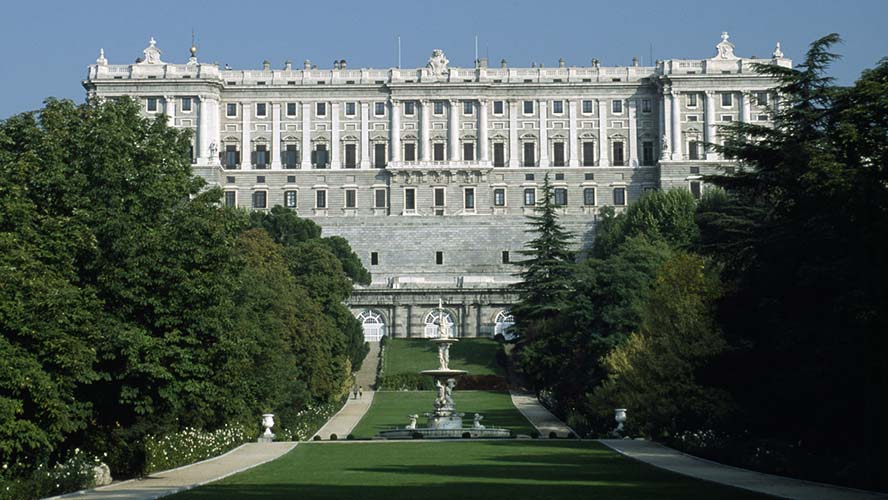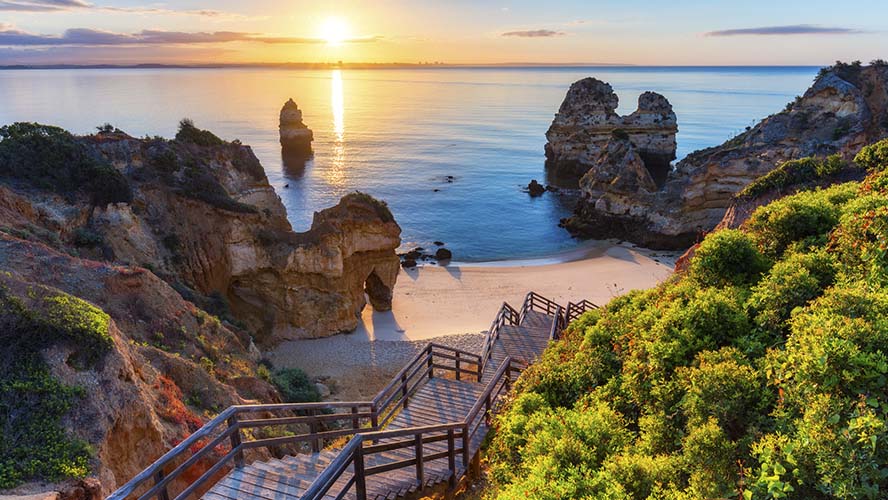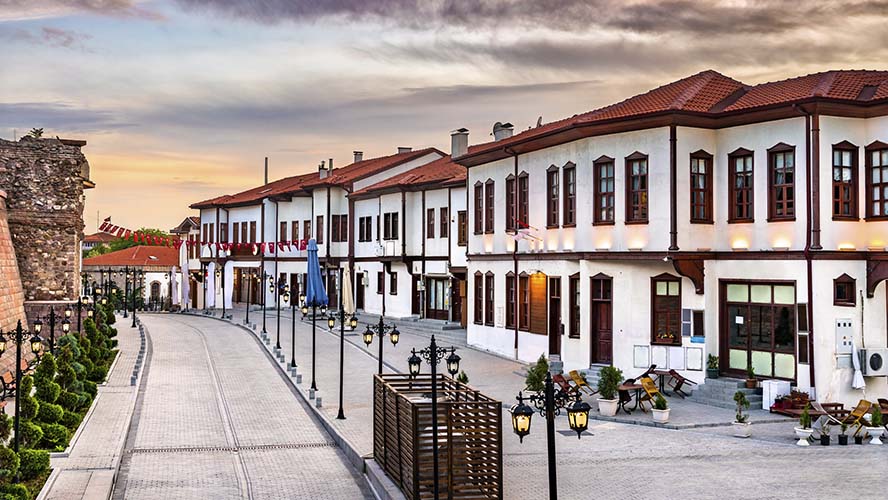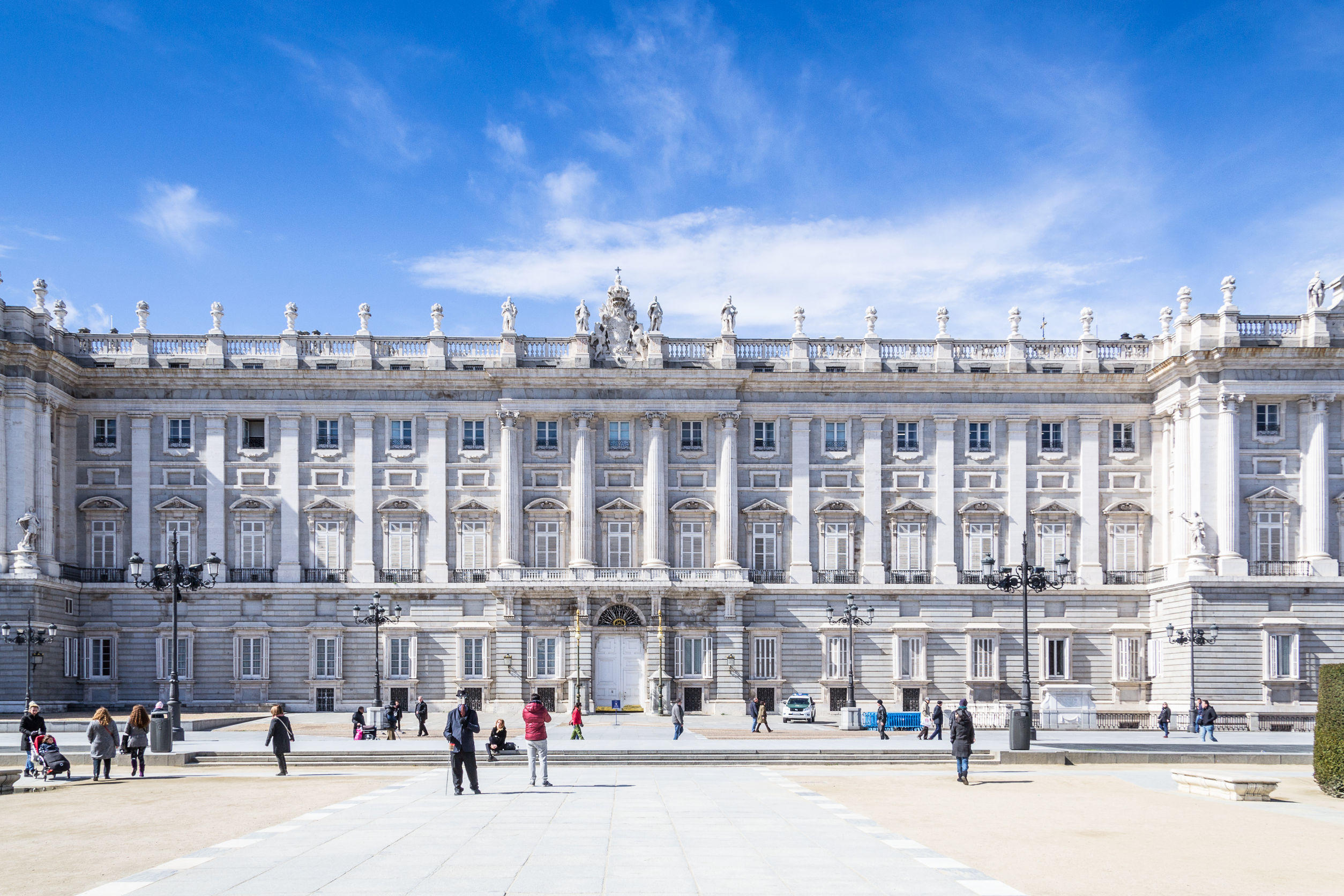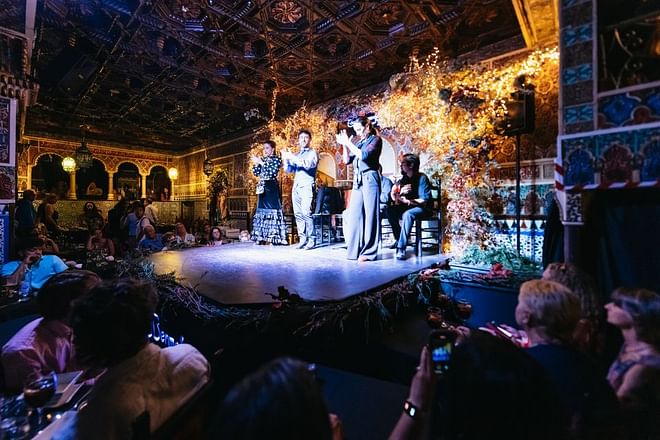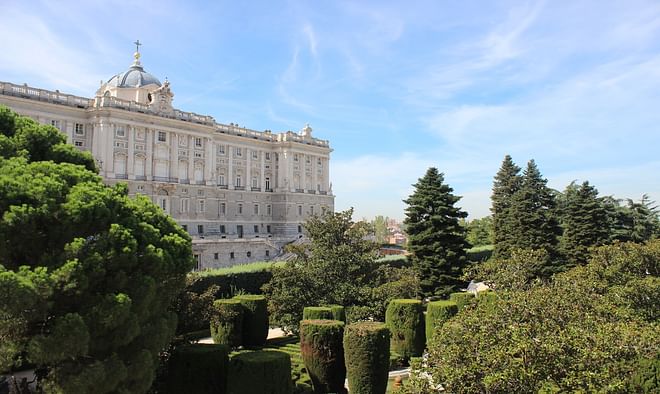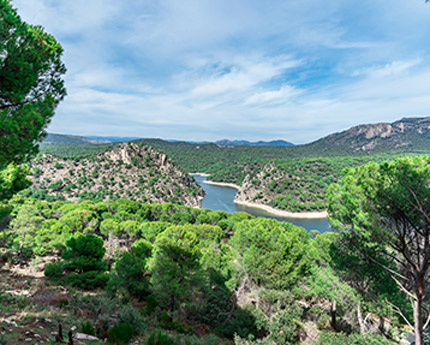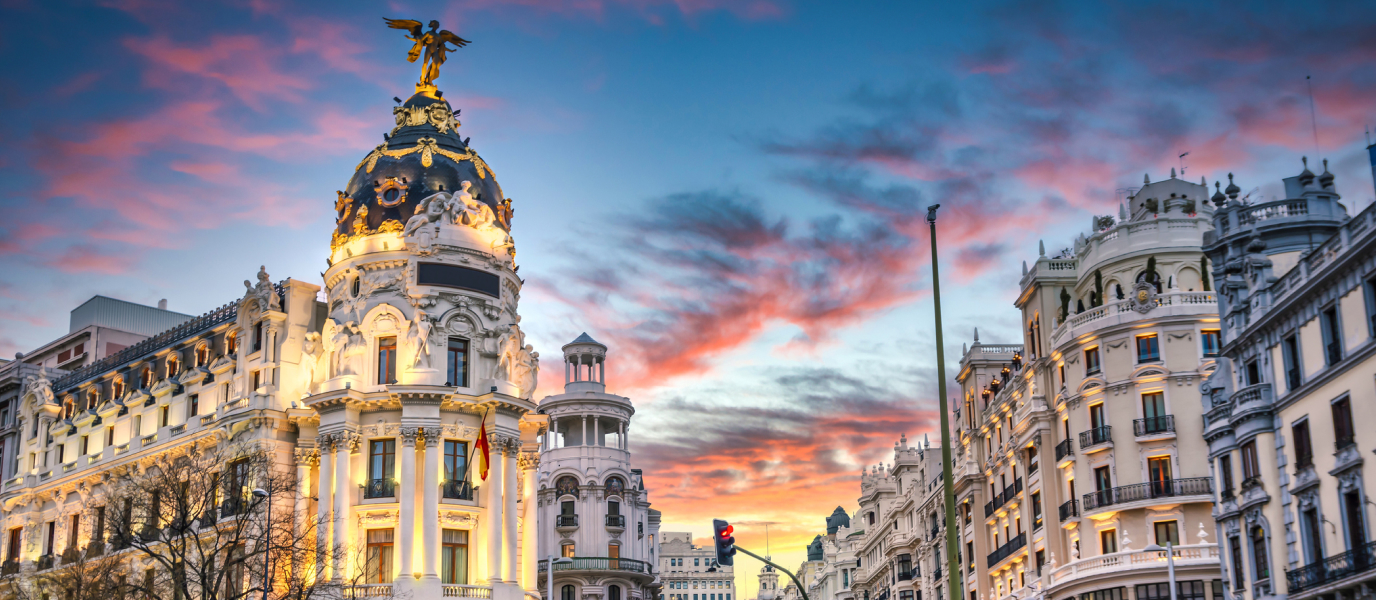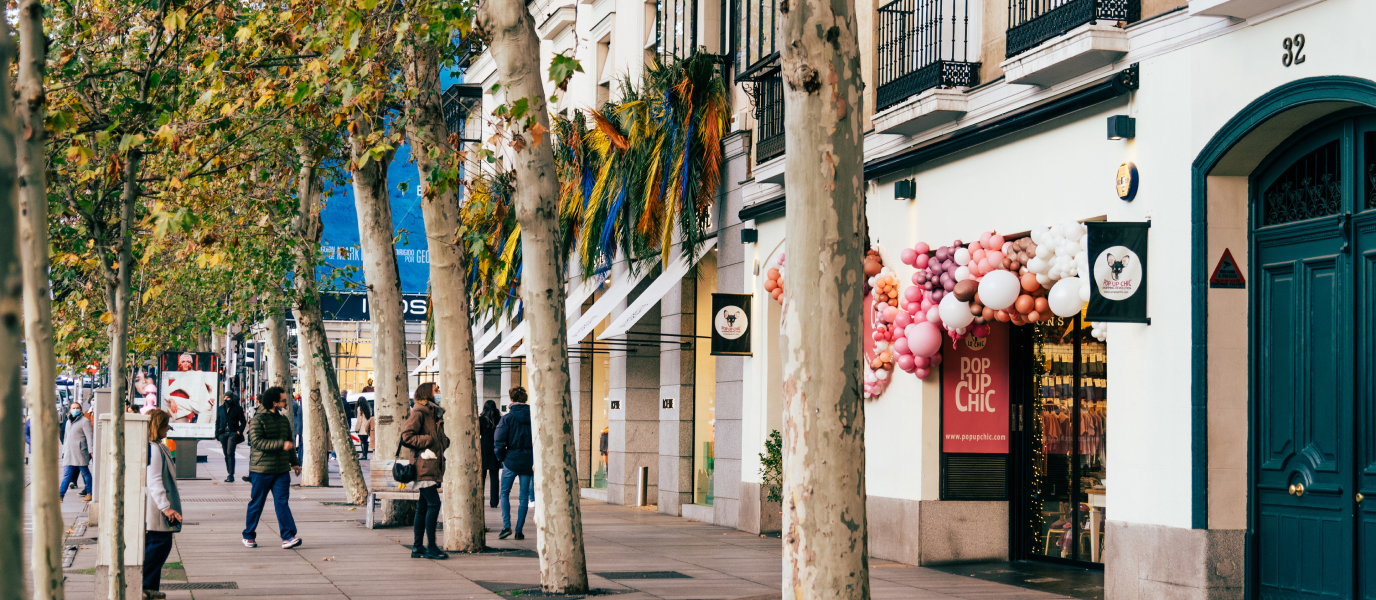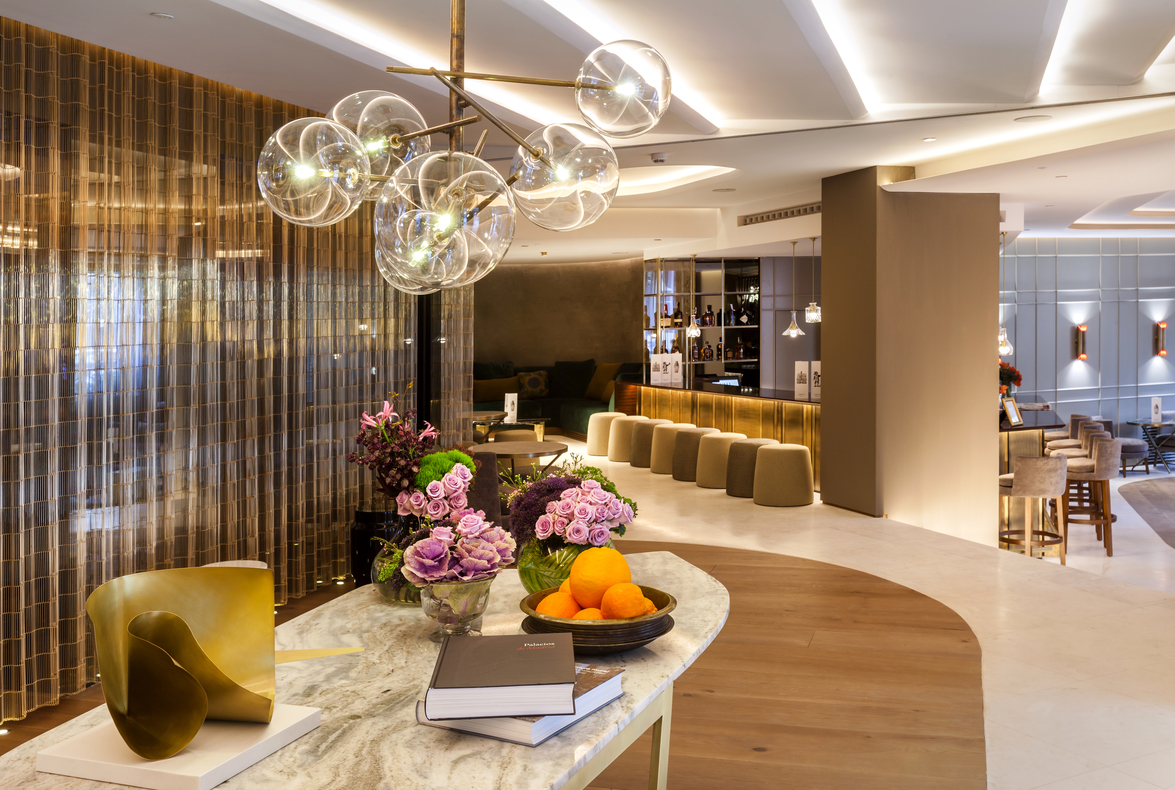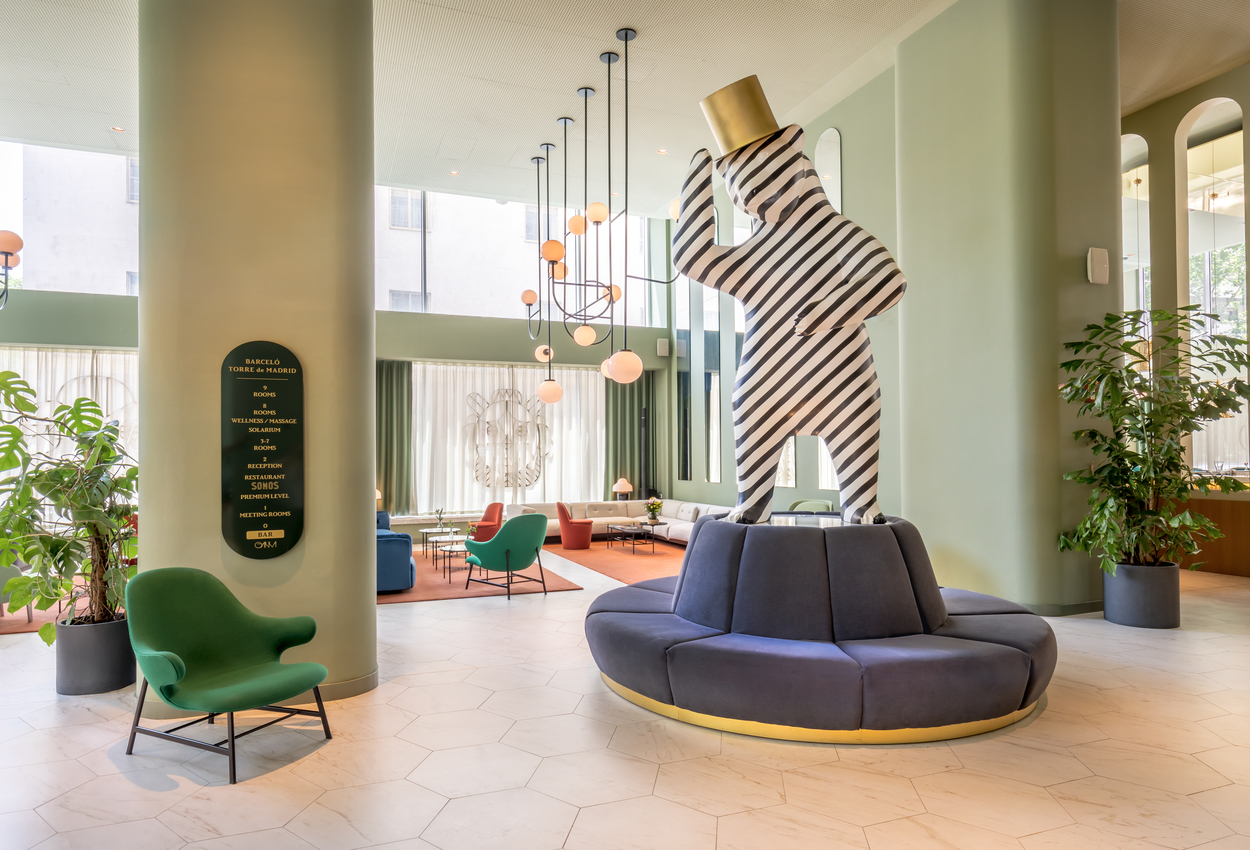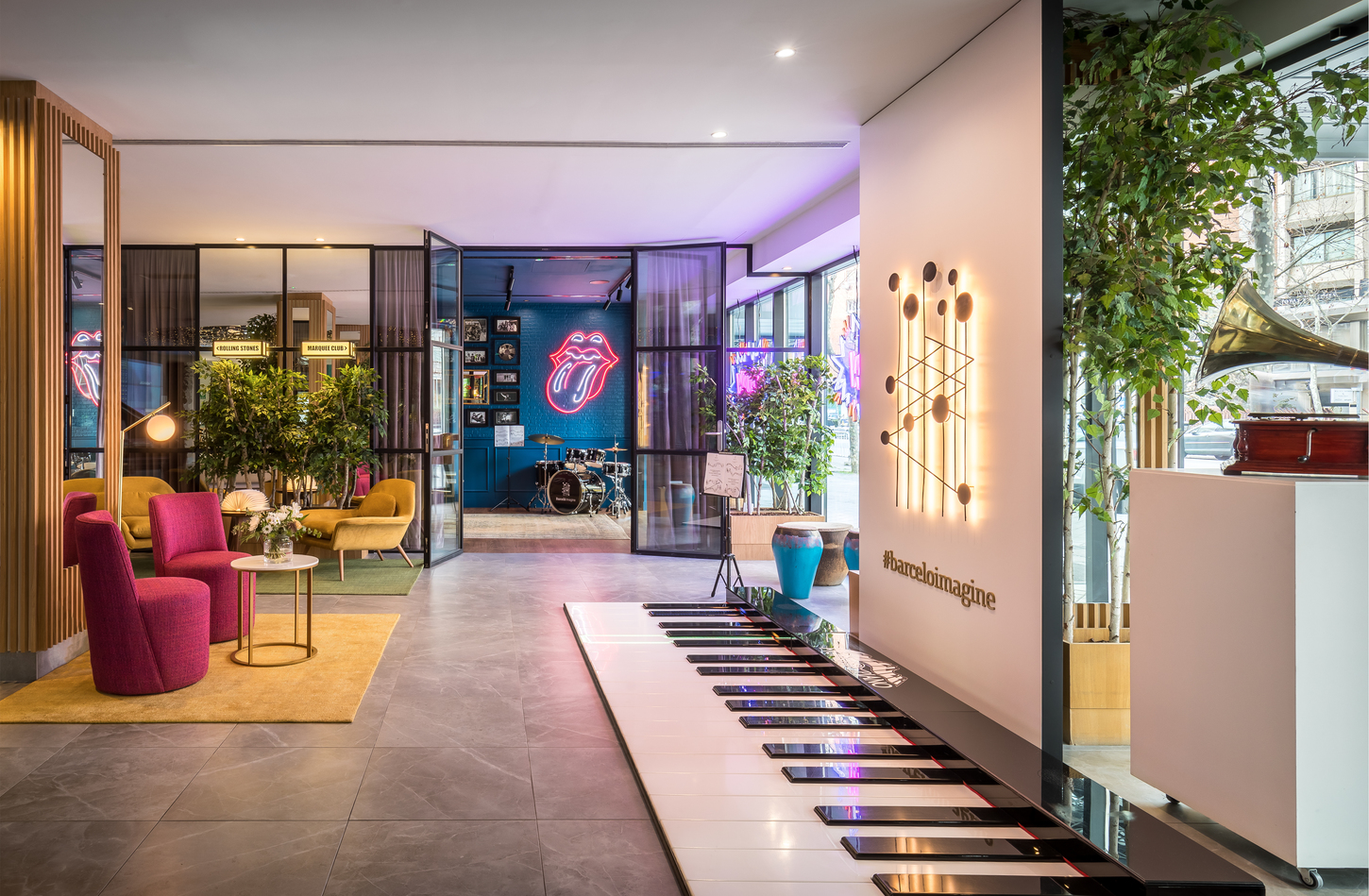The Palacio Real de Madrid—Royal Palace of Madrid, also known as the Palacio de Oriente—has presided majestically over the valley of the river Manzanares since the mid eighteenth century. Because of its strategic significance as a look-out point, the mansion on which the palace was based dated back to the city’s beginnings in the ninth century. Emir Mohammed I ordered a fortress to be built there to defend Toledo from the advancing Christian army, and after the reconquest, the kings of Castile used it as the site for a new castle, the Antiguo Alcázar—the direct predecessor of the present palace. With an area equivalent to 27 football pitches and with a total of 3,418 rooms, the Royal Palace ranks as the largest palace in Western Europe, twice the size of Buckingham Palace or the Palace of Versailles. Behind the lovely Sabatini gardens and those of the Campo de Moro, the palace’s interior guards its greatest treasure: a priceless heritage, both artistic and historical, the antiquity of which reveals a great deal about the history of Spain’s monarchy. Managed nowadays by Patrimonio Nacional [the National Heritage authority], the palace opens its doors to the public every day of the year (apart from when official events and celebrations are taking place), with the famous Changing of the Guard being the most popular event for visitors. We will now take a brief tour of its courtyards, its interior and the history that lies behind it.
Related experiences
A quick glance at the history of the Royal Palace and its inhabitants
It is said that French and Italian guests who visited Madrid back in the early eighteenth century never left without criticising the crude design of the Antiguo Alcázar, behind whose irregular façades lay a labyrinth of dark rooms. Thus, the fierce fire that destroyed the building on Christmas Eve 1734 was, according to some, an opportunity in the eyes of the first Bourbon monarch, Felipe V, to build a palace more in tune with the tastes of the age.
The Italian architect Filippo Juvara was appointed to design the new palace—in a classicist Baroque style which, far from rejecting classical forms, reworked them in an imaginative way. Juvara’s disciple, Juan Bautista Sachetti oversaw the construction work and, seventeen years later, handed the completed palace over to Carlos III, known among his contemporaries as the “king-mayor”.
After that, the palace became the usual residence of the Spanish monarchy, from Carlos III whom we have already mentioned, to Alfonso XIII—with one final inhabitant after Alfonso went into exile. This was the president of the Second Spanish Republic, Manuel Azaña who lived for a few months in the apartments previously occupied by Queen María Cristina.
A brief tour of the interior
We can thoroughly recommend the guided tour of the Royal Palace, which lasts forty-five minutes. It is advisable to buy your ticket in advance in order to avoid the tedium of queueing. The tour begins on the Explanada de la Almudena, which is reached from Calle de Bailén. From there, you enter the Patio de la Armería, a vast rectangular area paved with stone; the name comes from the Royal Armoury (one of the finest collections of arms in the world) which occupies one of its corners, and was built on the orders of Felipe II with the aim of leaving a lasting tribute to Spain’s military spirit. This courtyard is the setting for the famous ceremonies of the Solemn Changing of the Guard and the regular Changing of the Guard, spectacles that feature dress uniforms similar to those worn by the Spanish army in the time of Alfonso XIII.
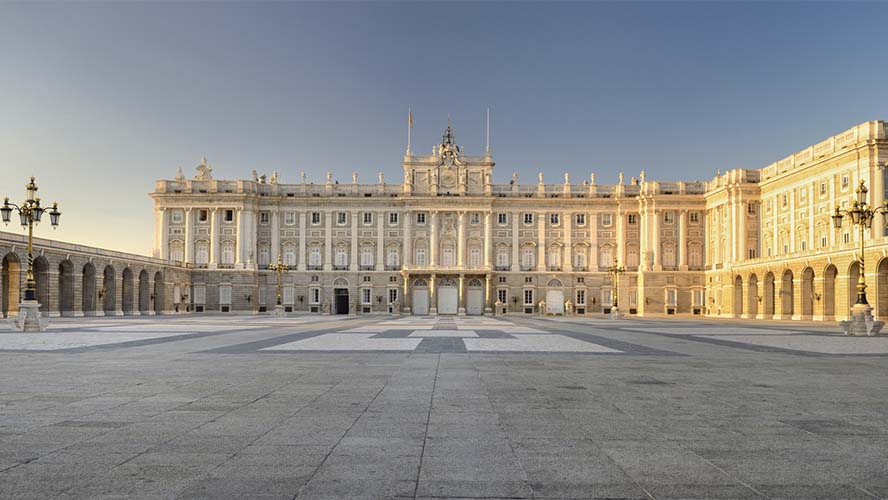
At the back of the Plaza, you will see the triple gateway, strategically orientated to face south, on the white stone balustrade of which stand four sculptures of Visigoth kings. Immediately after passing through this gateway, you will see the main staircase, the work of Francesco Sabatini in 1760 whose embellishments include lions carved in marble and Corrado Giaquinto’s impressive frescoes—El triunfo de la Religión y de la Iglesia [The Triumph of Religion and the Church].
It is on the main floor that the tour really gets underway with a seemingly endless succession of halls and state rooms, each in its own way a testament to the building’s grandeur. Decorated with the finest materials of the age (Spanish marble, stucco, mahogany), each room offers an insight into the aesthetic tastes of the particular monarch on whose orders it was created. From the reign of Carlos III, we have the Throne Room—with its splendid ceiling painted by Tiépolo—, the King’s Chamber, the Ballroom, and the Porcelain Room. From the reign of Carlos IV, the Room of Mirrors. And from the time of Alfonso XII, the Gala Banqueting Hall, lit by fourteen chandeliers with almost a thousand bulbs, still set out exactly as they were in 1879.
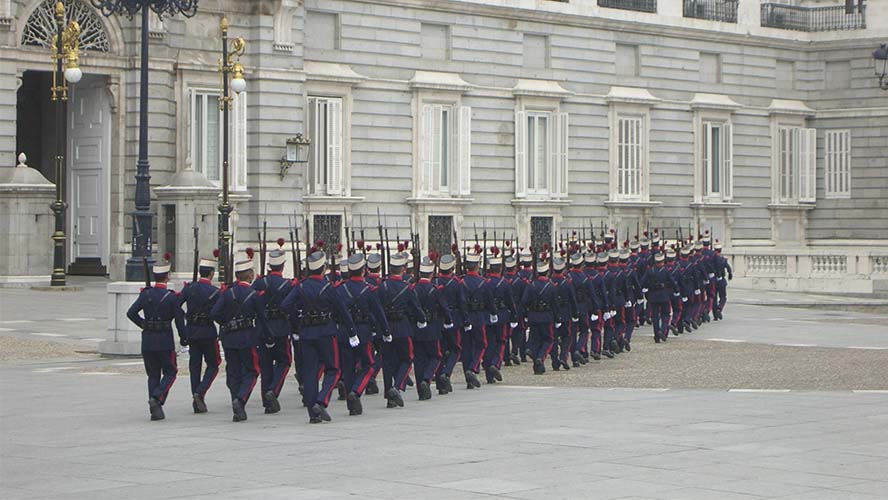
The tour also includes state rooms such as the Halberdiers’ Room, the King’s Chamber, the Gasparini Rooms, the Tapestry Room, the Royal Pharmacy and the Royal Chapel. Other rooms, including the inner patio (the Patio del Príncipe) are not open to the public.
Warning: Unfortunately, taking photographs inside the palace (apart from on the main staircase) is completely prohibited.
The collections hidden within
Of course, the second key element of this tour is provided by the historic and artistic collections housed by the Palace. One of these is to be found in the Royal Armoury which we mentioned earlier; this includes legendary pieces such as the armour worn by Carlos V during the Battle of Mühlberg (the same armour he is wearing in the Titian portrait in the Prado Museum); and Colada, the Cid’s other heroic sword, the companion of the famous Tizona.
The Royal Chapel meanwhile is home to the legendary Cuarteto Palatino—two violins, two violoncellos and a viola—made in the eighteenth century by Antonio Stradivari, the most renowned luthier of Cremona. We must not forget the Royal Library, which contains around 300,000 items dating from between the sixteenth and twentieth centuries; the Royal Pharmacy, established as a museum since 1964; and the Painting Gallery, which includes works by illustrious painters such as Velázquez, Goya, Mengs, Sorolla, Caravaggio and Giaquinto.
The Palace gardens
The icing on the cake of this tour is a stroll around the tranquil, verdant gardens that surround the Palace. The Gardens of the Campo de Moro, in the English nineteenth-century style, provide one of the most famous views of the Palacio de Oriente. It is said that during medieval times they served as a settlement area for the Muslim troops of Emir Alí ibn Yúsuf during one of the many attempts to reconquer the Christian base of Madrid. This explains the origin of the name, Campo de Moro.
The Sabatini Gardens, located to the north, were established in 1933, after the proclamation of the Second Republic, on the site previously occupies by the royal cavalry. Scattered throughout the gardens can be seen some of the 108 statues of Spain’s kings and queens, originally created to decorate the upper cornice of the Royal Palace.
